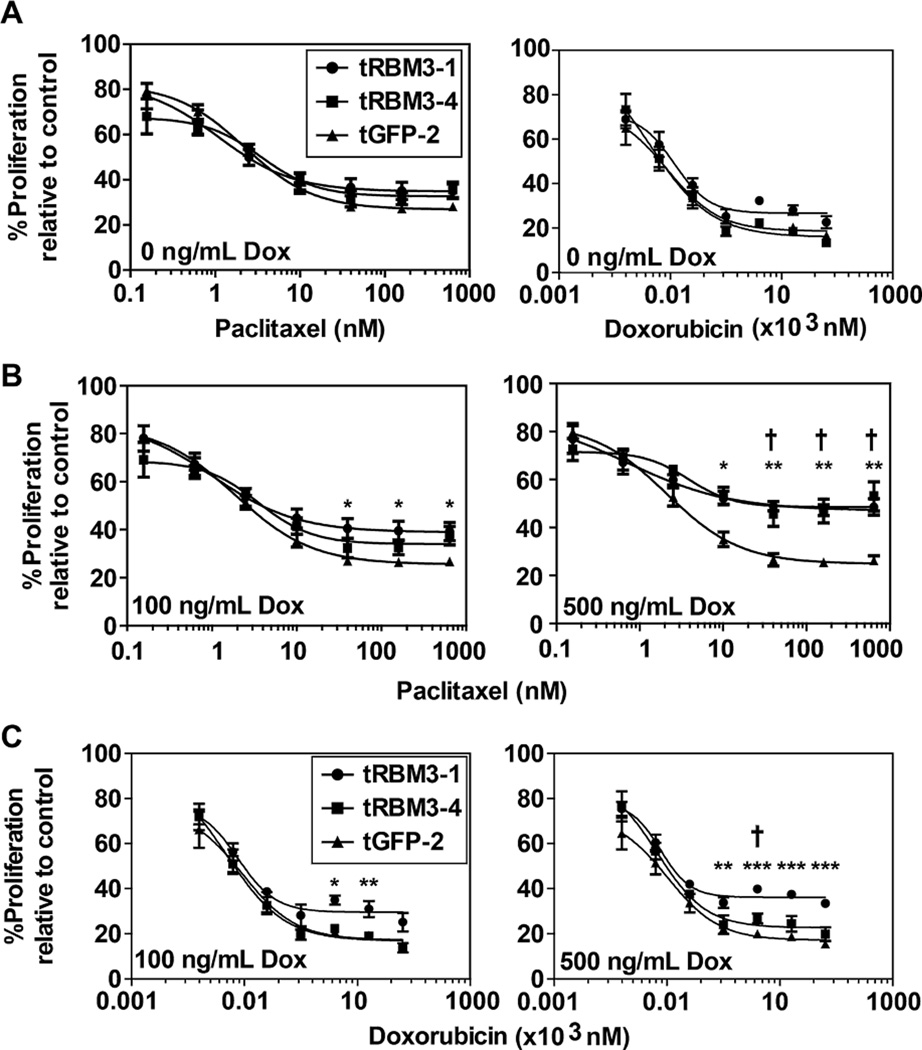Figure 3.
RBM3 induction increases chemotherapy resistance. (A) Comparison of proliferation of HCT 116 Tet-GFP and Tet-RBM3 clones with varying concentrations of paclitaxel or doxorubicin with 0 ng/mL Dox induction. The two cell lines show no difference in proliferation rate. (B) Comparison of hexoseaminidase proliferation assay of HCT 116 Tet-GFP and Tet-RBM3 clones treated with varying concentrations of paclitaxel following 72 h of 100 or 500 ng/mL Dox induction. In the presence of RBM3, the proliferation inhibition by paclitaxel is reduced. (C) Comparison of hexoseaminidase proliferation assay of HCT 116 Tet-GFP and Tet-RBM3 clones treated with varying concentrations of doxorubicin following 72 h of 100 or 500 ng/mL Dox induction. Again there was significant reduction in doxorubicin-mediated proliferation inhibition in the presence of RBM3. Graphs show SEM. *P < 0.05, **P < 0.01, ***P < 0.001 for RBM3-1, †P < 0.05, ††P < 0.01, †††P < 0.001 for RBM3-4 (Student's t-test).

